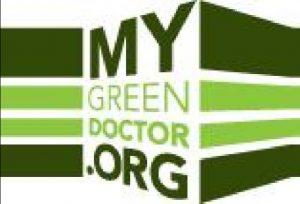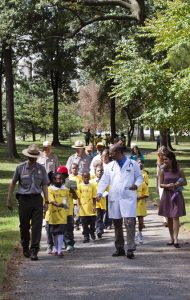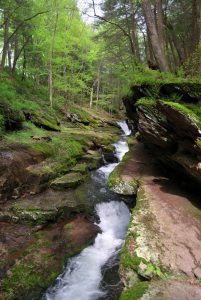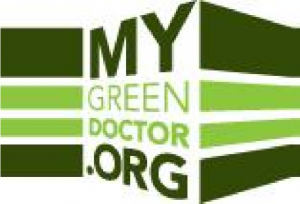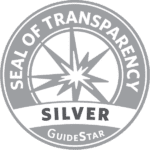Editor’s Note: We think you’ll enjoy this 5 minute report on ‘Nature Therapy”. At the end of the article are eight ideas for your office.
Try writing this prescription: “Walk outside 30-60 minutes daily!”
Even mild exercise such as daily walking is a potent treatment for anxiety, depression, hypertension, diabetes, obesity and some arthritis. Prescriptions for walking are a part of Ecotherapy, a new approach highlighted in a recent article. (1) Ecotherapy draws upon the idea that most people benefit by putting Mother Nature back into their lives, that doing so can lead to an enhanced sense of relaxation  and well-being, and perhaps to lower levels of stress hormones. Researchers report improved blood sugars and lower blood pressure. The hope is also that nature therapy can guide patients to make better life-style choices that with time will improve population health outcomes.
and well-being, and perhaps to lower levels of stress hormones. Researchers report improved blood sugars and lower blood pressure. The hope is also that nature therapy can guide patients to make better life-style choices that with time will improve population health outcomes.
In many ways, this is nothing new. Philosophers, theologians, and doctors have long recognized the health benefits of fresh air and the natural environment. The environmental philosopher, John Muir (1838-1914), wrote in 1901, “Thousands of tired, nerve-shaken, over-civilized people are beginning to find out that going to the mountains is going home; that wildness is a necessity.” (2) The famous Harvard biologist, Edward O. Wilson, popularized the term “Biophilia” (love of nature) in his 1984 book by that name. (3) He claims that human beings have a natural affinity for plants and animals, and that our diminishing contacts with the wild, living natural world has an adverse effect on our emotional and physical well-being. Richard Louv in his 2005 book, Last Child in the Woods, promotes the concept of “Nature Deficiency Syndrome”. (4) His ideas are that people living in the Developed World—and especially children– are out of touch with the nature and that correcting this could help address many contemporary health problems.
Ecotherapy Comes Indoors
The practice of Ecotherapy in modern medicine is evolving, both indoors and outside. There are no standard protocols or consensus statements by panels of clinical experts. Dr. Shamard Charles, describes various approaches. Pleasing sounds of chirping birds and bubbling brooks might be heard in the homes of patients and in medical offices. Some hang photographs or paintings of forests, green fields, and other pleasant nature views. The presence of indoor plants helps. (1) One of the experts in this field is Professor Erin Largo-Wight of the University of North Florida (USA). Her careful studies of workplaces show that design features that include nature can improve emotional well-being and productivity. (5-7). Adopting her idea, My Green Doctor provides a free brochure with easy and evidence-based ideas that you can add to your medical office or outpatient facility (https://mygreendoctor.es/resources/waiting-room-brochures/ ).
Another aspect of Ecotherapy practiced in many countries is “Forest Bathing.” This word is the English translation of the of the Japanese “Shinrin-Yoku”, a traditional practice of going out into the woods to find peace and comfort. (8,9) Dr. Charles describes an American family physician who has embraced Shinrin-Yoku by writing the following prescription for her patients: “Five times a week… spend 30 minutes at a park near your home.” A few small studies show that most people do feel better after following recommendations like this. Dr. Charles cites “researchers at the University of Essex (UK) who found that 9 out of 10 patients suffering from depression felt ‘higher self-esteem after a walk through a park.’ Almost three-quarters reported feeling less depressed and the researchers found that people recovered faster from illnesses through an ‘immunizing’ effect that protected them from future stresses.” (1)
 It is unlikely that a large, controlled clinical trial will be conducted to validate these therapies. Nonetheless, there is a push to get more health professionals and even hospital systems involved. Non-profit groups such as “Docs in the Park”, “Park Rx America”, ‘Walk with a Doc”, and the “Timucuan Parks Foundation” are looking for ways to encourage health professionals to get their patients outside to enjoy city, state and national parks. Into the woods! Some hospital systems are getting involved by organizing walks in parks and even by sponsoring parks and trails with financial support. The parks parks will benefit also because people who use public parks are more likely to vote for funding for parks and for environmental conservation.
It is unlikely that a large, controlled clinical trial will be conducted to validate these therapies. Nonetheless, there is a push to get more health professionals and even hospital systems involved. Non-profit groups such as “Docs in the Park”, “Park Rx America”, ‘Walk with a Doc”, and the “Timucuan Parks Foundation” are looking for ways to encourage health professionals to get their patients outside to enjoy city, state and national parks. Into the woods! Some hospital systems are getting involved by organizing walks in parks and even by sponsoring parks and trails with financial support. The parks parks will benefit also because people who use public parks are more likely to vote for funding for parks and for environmental conservation.
Here are eight Ecotherapy ideas to consider for your healthcare practice:
1. Add nature to your office with plants, photographs, and nature magazines.
2. Use your prescription pad or stationery to prescribe: “Walk outside 30-60 minutes daily”.
3. For key diagnoses such as hypertension, obesity, and diabetes, add this “prescription” to the standard template of every patient’s instructions printed by your Electronic Medical Record.
4. Talk with your patients about the health benefits of visiting parks regularly.
5. Organize a weekend “Park Walk” for your patients and staff.
6. Print out to hang in your waiting room and staff room a free poster from entitled, “Ask Your Doctor for A Park Prescription Today!” Find the poster at: http://parkrxamerica.org/resources.php .
7. Ask your hospital administrator to adopt a local park, to sponsor park walks, and even to fund the building of “therapeutic trails” that can be used by rehabilitation patients.
8. Explore your city, state & national parks. “Take a hike!”
Author: Todd Sack MD FACP is Editor for www.mygreendoctor.org. Contact him for more ideas: tsack8@gmail.com
References: 
1. https://www.nbcnews.com/health/health-news/dose-nature-doctors-prescribe-day-park-anxiety-n823421
2. From Our National Parks, (1901) quoted in https://www.goodreads.com/author/quotes/5297.John_Muir
3. Wilson, E O (1984). Biophilia. Cambridge: Harvard University Press. ISBN0-674-07442-4.
4. Louv, R (2005), Last Child in the Woods (2005) Chapel Hill, NC: Algonquin Books
5. Frumkin, H. (2001). Beyond toxicity: Human health and the natural environment. American Journal of Preventive Medicine, 20:234-240. Available: http://www.ncbi.nlm.nih.gov/pubmed/11275453
6. Largo-Wight, E. (2011). Cultivating healthy places and communities: Evidenced-based nature contact recommendations. International Journal of Environmental Health Research, 21(1), 41-61. Available: http://www.ncbi.nlm.nih.gov/pubmed/21246432
7. Largo-Wight, E., Chen, W., Dodd, V., & Weiler, R. (2011). Healthy workplaces: The role of nature contact office exposures on employee stress and health. Public Health Reports, 126 (3), 1-13. Available:
8. http://www.shinrin-yoku.org/
9. https://en.wikipedia.org/wiki/Forest_bathing
Photo Credit: Doctor in Park with Children: https://parkrxamerica.org/resources.php
Copyright Florida Medical Association, Tallahassee, Florida USA, 2020.
